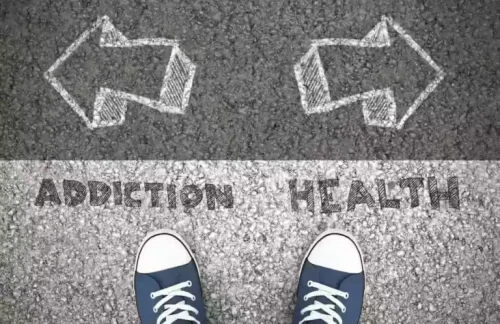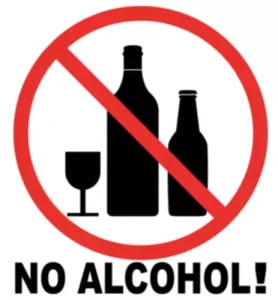
Current theory and research indicate that physiological components of drug withdrawal may be motivationally inert, with the core motivational constituent of withdrawal being negative affect [25,66]. Thus, examining withdrawal in relation to relapse may only prove useful to the extent that negative affect is assessed adequately [64]. Withdrawal tendencies can develop early in the course of addiction [25] and symptom profiles can vary based on stable intra-individual factors [63], suggesting the involvement of tonic processes. Despite serving as a chief diagnostic criterion, withdrawal often does not predict relapse, perhaps partly explaining its de-emphasis in contemporary motivational models of addiction [64]. However, recent studies show that withdrawal profiles are complex, multi-faceted and idiosyncratic, and that in the context of fine-grained analyses withdrawal indeed can predict relapse [64,65].
How The Abstinence Violation Effect Impacts Long-Term Recovery
Relapse has been variously defined, depending on theoretical orientation, treatment goals, cultural context, and target substance (Miller 1996; White 2007). It is, however, most commonly used to refer to a resumption of substance use behavior after a period of abstinence from substances (Miller 1996). The term relapse may be used to describe a prolonged return to substance use, whereas lapsemay be used to describe discrete, circumscribed...
Relapse and Lapse
Recent reviews provide a convincing rationale for the putative role of implicit processes in addictive behaviors and relapse [54,56,57]. Implicit measures of alcohol-related cognitions can discriminate among light and heavy drinkers [58] and predict drinking above and beyond explicit measures [59]. One study found that smokers' abstinence violation effect attentional bias to tobacco cues predicted early lapses during a quit attempt, but this relationship was not evident among people receiving nicotine replacement therapy, who showed reduced attention to cues [60]. Put simply, the AVE occurs when a client perceives no intermediary step between a lapse and a relapse.
- These findings may be informative for researchers who wish to incorporate genetic variables in future studies of relapse and relapse prevention.
- As he sat there, he realized that he had broken his vow of abstinence and then continued to drink until he became extremely intoxicated.
- Overall, the RP model is characterized by a highly ideographic treatment approach, a contrast to the "one size fits all" approach typical of certain traditional treatments.
- One day, when he was faced with a stressful situation, he felt overwhelmed, gave in to the urge, and had a drink.
- Historically, abstinence has also been the dominant long-term treatment goal within treatment settings for gambling disorder (Ladouceur, Lachance, & Fournier, 2009).
Marlatt's relapse prevention model: Historical foundations and overview
The Abstinence Violation Effect (AVE) is a psychological phenomenon that refers to a person’s reaction to breaking a self-imposed rule of abstinence or self-control. It occurs when individuals who have set strict rules for themselves regarding certain behaviors or habits (e.g., alcohol consumption, smoking, or eating certain foods) engage in the prohibited behavior, leading to feelings of guilt, shame, and loss of control. Recently, Magill and Ray [41] conducted a meta-analysis of 53 controlled trials of CBT for substance use disorders. As noted by the authors, the CBT studies evaluated in their review were based primarily on the RP model [29]. Overall, the results were consistent with the review conducted by Irvin and colleagues, in that the authors concluded that 58% of individuals who received CBT had better outcomes than those in comparison conditions. In contrast with the findings of Irvin and colleagues [36], Magill and Ray [41] found that CBT was most effective for individuals with marijuana use disorders.

Continued empirical evaluation of the RP model

A basic assumption is that relapse events are immediately preceded by a high-risk situation, broadly defined as any context that confers vulnerability for engaging in the target behavior. Examples of high-risk contexts include emotional or cognitive states (e.g., negative affect, diminished self-efficacy), environmental contingencies (e.g., conditioned drug cues), or physiological states (e.g., acute withdrawal). Although some high-risk situations appear nearly universal across addictive behaviors (e.g., negative affect; [25]), high-risk situations are likely to vary across behaviors, across individuals, and within the same individual over time [10]. Whether a high-risk situation culminates in a lapse depends largely on the individual's capacity to enact an effective coping response--defined as any cognitive or behavioral compensatory strategy that reduces the likelihood of lapsing. Because relapse is the most common outcome of treatment for addictions, it must be addressed, anticipated, and prepared for during treatment.
Towards DSM-V: Considering other withdrawal-like symptoms of pathological gambling disorder
You can copy, modify, distribute and perform the work, even for commercial purposes, all without asking permission. (a) When restrained eaters’ diets were broken by consumption of a high-calorie milkshake preload, they subsequently show disinhibited eating (e.g. increased grams of ice-cream consumed) compared to control subjects and restrained eaters who did not drink the milkshake (figure based on data from [30]). (b) Restrained eaters whose diets were broken by a milkshake preload showed increased activity in the nucleus accumbens (NAcc) compared to restrained eaters who did not consume the preload and satiated non-dieters [64]. Set realistic expectations for your recovery journey, understanding that progress may not always be linear. Rather than only focusing on the end goal, celebrate small victories and all positive steps you’ve taken thus far.
Lapses are, however, a major risk factor for relapse as well as overdose and other potential social, personal, and legal consequences of drug or alcohol abuse. This can include abstinence from substance abuse, overeating, gambling, smoking, or other behaviors a person has been working to avoid. Substance use recovery programs should refrain from defining a mere slip as a total failure of abstinence.


The dynamic model further emphasizes the importance of nonlinear relationships and timing/sequencing of events. For instance, in a high-risk context, a slight and momentary drop in self-efficacy could have a disproportionate impact on other relapse antecedents (negative affect, expectancies) [8]. Furthermore, the strength of proximal influences on relapse may vary based on distal risk factors, with these relationships becoming increasingly nonlinear as distal risk increases [31]. For example, one could imagine a situation whereby a client who is relatively committed to abstinence from alcohol encounters a neighbor who invites the client into his home for a drink. Feeling somewhat uncomfortable with the offer the client might experience a slight decrease in self-efficacy, which cascades into positive outcome expectancies about the potential effects of having a drink as well as feelings of shame or guilt about saying no to his neighbor's offer.
